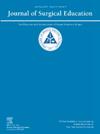完美的骨科申请人?探讨全国居民配对计划“配对结果图表”报告的趋势
IF 2.1
3区 医学
Q1 EDUCATION, SCIENTIFIC DISCIPLINES
引用次数: 0
摘要
本研究考察了2016年至2024年骨科住院医师申请人特征的趋势,重点关注匹配率、学术表现和研究生产力的变化。它强调了关键转变的影响,例如过渡到USMLE步骤1的合格/不合格评分和MD-DO住院医师合并。该研究旨在深入了解选择标准是如何演变的,以及未来的申请人、医学院和住院医师项目在竞争激烈的骨科手术领域中应该考虑什么。本研究旨在探讨2016年至2024年骨科住院医师申请情况,并分析申请人特征、学习成绩和匹配率的主要趋势。方法回顾性分析骨科手术匹配和不匹配患者的客观特征。数据来自NRMP,图表结果在比赛中,包括2016年至2024年以及其他每个应用周期。所有收集的数据根据申请人类型进行分离,分为美国对抗疗法和美国整骨疗法。结果在2016年至2024年期间,美国对抗疗法老年人的骨科住院医师匹配率一直最高,2024年的匹配率为74.3%,尽管不匹配的申请人也随着时间的推移而增加,这反映出竞争日益激烈。美国骨科老年人的匹配率有所提高,从2018年的4次匹配上升到2024年的93次,而不匹配的申请人也在增加。包括USMLE第1步和第2步CK分数在内的学术表现指标显示,在第1步过渡到通过/不及格报告之后,第2步CK的重要性日益提高。研究效率在申请人群体中显著提高,但不是匹配成功的唯一决定因素。拥有美国医学协会会员资格的申请人和来自美国国立卫生研究院资助的排名前40位的医学院的申请人的匹配率更高,美国医学协会会员资格提供了特别显著的优势。结论对2016年至2024年骨科住院医师比赛数据的分析显示,竞争力不断增强,重点从第一步得分转向第二步CK和研究生产力。美国整骨疗法的申请者继续面临挑战,但凭借良好的学术表现和战略性的应用,成功仍然是可能的,这促使需要进一步研究选择标准和长期结果。本文章由计算机程序翻译,如有差异,请以英文原文为准。
The Perfect Orthopedic Surgery Applicant?: Exploring Trends in the National Resident Matching Program “Charting Outcomes in the Match” Reports
Introduction
This study examines trends in applicant characteristics for orthopedic surgery residency from 2016 to 2024, focusing on changes in match rates, academic performance, and research productivity. It highlights the impact of key shifts such as the transition to pass/fail grading for USMLE Step 1 and the MD-DO residency merger. The study aims to provide insights into how selection criteria have evolved and what future applicants, medical schools, and residency programs should consider when navigating the competitive field of orthopedic surgery. The purpose of this study is to examine the landscape of orthopedic surgery residency applications from 2016 to 2024, and analyze key trends in applicant characteristics, academic performance, and match rates.
Methods
This was a retrospective review of objective characteristics of both matched and unmatched applicants to orthopedic surgery. Data was sourced from NRMP, Charting Outcomes in the Match and was inclusive of years 2016 to 2024 with every other application cycle. All collected data was separated based on applicant type, divided between U.S. allopathic and U.S osteopathic.
Results
Between 2016 and 2024, U.S. allopathic seniors consistently had the highest match rates for orthopedic surgery residency, with 74.3% matching in 2024, though unmatched applicants also increased over time, reflecting growing competition. U.S. osteopathic seniors showed improvements in their match rates, rising from just 4 matches in 2018 to 93 in 2024, while unmatched applicants also grew. Academic performance metrics, including USMLE Step 1 and Step 2 CK scores, revealed a rising emphasis on Step 2 CK after Step 1′s transition to pass/fail reporting. Research productivity notably increased across applicant groups, but was not the sole determinant of success in matching. Applicants with AOA membership and those from Top 40 NIH-funded medical schools had higher match rates, with AOA membership providing a particularly significant advantage.
Conclusion
This analysis of orthopedic surgery residency match data from 2016 to 2024 reveals increasing competitiveness, with a shift in focus from Step 1 scores to Step 2 CK and research productivity. U.S. osteopathic applicants continue to face challenges, but with strong academic performance and strategic applications, success remains attainable, prompting the need for further research into selection criteria and long-term outcomes.
求助全文
通过发布文献求助,成功后即可免费获取论文全文。
去求助
来源期刊

Journal of Surgical Education
EDUCATION, SCIENTIFIC DISCIPLINES-SURGERY
CiteScore
5.60
自引率
10.30%
发文量
261
审稿时长
48 days
期刊介绍:
The Journal of Surgical Education (JSE) is dedicated to advancing the field of surgical education through original research. The journal publishes research articles in all surgical disciplines on topics relative to the education of surgical students, residents, and fellows, as well as practicing surgeons. Our readers look to JSE for timely, innovative research findings from the international surgical education community. As the official journal of the Association of Program Directors in Surgery (APDS), JSE publishes the proceedings of the annual APDS meeting held during Surgery Education Week.
 求助内容:
求助内容: 应助结果提醒方式:
应助结果提醒方式:


